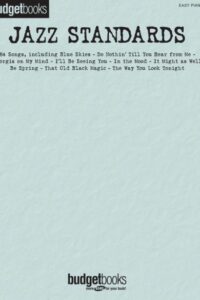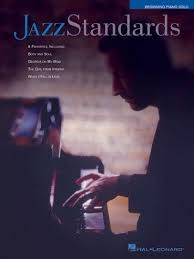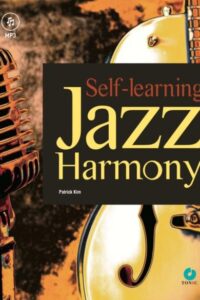Table of Contents
Come join us now, and enjoy playing your beloved music and browse through great scores of every level and styles!
Can’t find the songbook you’re looking for? Please, email us at: sheetmusiclibrarypdf@gmail.com We’d like to help you!
Killing Me Softly With His Song (Lead Sheet & lyrics) sheet music, Noten, partitura, spartiti 楽譜

Best Sheet Music download from our Library.
Please, subscribe to our Library.
If you are already a subscriber, please, check our NEW SCORES’ page every month for new sheet music. THANK YOU!

Browse in the Library:
Or browse in the categories menus & download the Library Catalog PDF:
Killing Me Softly With His Song: The Anatomy of an Enduring Masterpiece
Few songs capture the visceral, almost intrusive power of a performance like “Killing Me Softly With His Song.” Its title, a paradox of gentle violence, hints at the profound emotional impact it describes and, in turn, delivers. More than just a hit, it’s a cultural touchstone and a certified jazz standard, its journey woven from poetry, diverse interpretations, and timeless musicality.
Origins: From Poem to Melody
The story begins not with a song, but with a poem. Singer-songwriter Lori Lieberman was deeply moved after seeing Don McLean perform his epic “American Pie.” She wrote a poem describing the feeling of hearing someone articulate your own unspoken emotions so perfectly it felt like being “strummed… like a guitar.” This poem, titled “Killing Me Softly with His Blues,” caught the ear of composer Charles Fox and lyricist Norman Gimbel.
Fox and Gimbel saw the potential. They transformed the poem, shifting the focus slightly and crafting the now-iconic title. Fox composed a melody that perfectly mirrored the lyric’s blend of vulnerability and intensity – smooth, soulful verses building towards a powerful, cathartic chorus. Gimbel’s lyrics masterfully depicted the singer’s experience: “Strumming my pain with his fingers / Singing my life with his words.” It was a universal feeling: the shock of recognition through art.

The Artists & Their Triumphs:
- Lori Lieberman (1971): The muse became the first voice. Her original recording, on the album “Lori Lieberman,” was a sincere, folk-tinged rendition. While critically noted, it didn’t achieve mainstream success but established the song’s core emotional resonance.
- Roberta Flack (1973): This is the version that etched the song into history. Flack heard Lieberman’s version on an airplane and was captivated. Her interpretation, produced by Joel Dorn for the album Killing Me Softly, is definitive. Flack’s warm, intimate alto voice, impeccable phrasing, and subtle gospel/soul inflections brought profound depth. The arrangement, featuring lush strings, a gentle but insistent rhythm section, and Flack’s own piano, created an atmosphere of both intimacy and grandeur. It became a global phenomenon, topping the Billboard Hot 100 for five weeks, winning Record of the Year and Song of the Year at the 1974 Grammys.
- The Fugees (1996): Over two decades later, the song was reborn. On their monumental album The Score, Lauryn Hill, Wyclef Jean, and Pras Michel transformed it into a haunting hip-hop/soul ballad. Hill’s lead vocals were raw and emotionally charged, carrying a new generation’s weight. Wyclef’s minimalist production, centered on a slowed, looped sample of Flack’s chorus and a deep bass line, gave it a cool, melancholic, streetwise edge. It became a massive global hit, introducing the song to a whole new audience and cementing its cross-generational appeal.

Musical Anatomy: Harmonies and Licks
- Harmony: The song’s harmonic foundation is deceptively sophisticated, contributing hugely to its jazz appeal. It’s primarily in D Major but utilizes rich, extended chords that create its signature bittersweet feel.
- The iconic intro sets the tone: Gmaj7 – F#m7 – Bm7 – E7 (often voiced with extensions like 9ths). This descending chromatic bass line (G – F# – B – E) creates immediate tension and melancholy.
- The verse progression (e.g., Dmaj7 – Gmaj7 – Em7 – A7 – Dmaj7 – Gmaj7 – F#m7 – Bm7 – E7 – A7) uses major 7ths, minor 7ths, and dominant 7ths fluidly, moving through related keys (like B minor) before resolving. This harmonic fluidity is perfect for jazz reinterpretation.
- The chorus progression (D – Bm – G – A) is relatively simpler but gains power through the shift from the verse’s complexity and the soaring melody.
- Melody & Licks: The melody is masterful in its simplicity and expressiveness.
- The verse melody is conversational, often using stepwise motion or small leaps, mirroring the storytelling lyrics (“I heard he sang a good song…”).
- The chorus melody soars dramatically on “Killing me softly,” hitting higher notes (especially on Flack’s and Hill’s versions) with sustained power (“with his soooooong”). The descending line on “Telling my whole life” is particularly poignant.
- Signature Licks: The rising and falling melodic contour of the chorus (“Killing me softly…”) is instantly recognizable. The bluesy inflection often added to words like “song,” “wrong,” and “strong,” especially by Flack and Hill, adds soulful depth. The piano intro (in Flack’s version) and the sampled vocal hook (in Fugees’ version) are also defining musical motifs.

Filmography:
The song’s evocative power has made it a natural fit for film and TV:
- Its most famous cinematic use is in the 2002 film About a Boy, starring Hugh Grant. The plot revolves around Grant’s character attending a support group meeting where a woman sings a painfully bad a cappella version of the song. This comedic scene hinges entirely on the audience’s deep familiarity with the song and its usual emotional weight.
- It frequently appears in TV shows, often used to underscore moments of deep emotional connection, vulnerability, or romantic revelation (e.g., Ally McBeal, The Sopranos, Glee).
Becoming a Jazz Standard:
“Killing Me Softly” transitioned seamlessly into the jazz repertoire for several reasons:
- Harmonic Richness: The sophisticated chord changes (major 7ths, minor 7ths, dominant 7ths, chromatic movements) provide fertile ground for jazz musicians to explore reharmonization, substitutions, and improvisation. The changes tell a compelling story even without the lyrics.
- Strong Melodic Contour: The memorable, expressive melody serves as an excellent springboard for improvisation. Soloists can paraphrase it, embellish it, or use its contours as inspiration.
- Emotional Resonance: The core emotion – vulnerability, deep recognition, catharsis – translates perfectly into the expressive language of jazz. It allows for deep ballad interpretations or more exploratory, intense takes.
- Proven Adaptability: The success of vastly different versions (Flack’s soul, Fugees’ hip-hop) demonstrated the song’s inherent flexibility, encouraging jazz musicians to find their own unique voice within its structure.
Jazz Interpretations:
Countless jazz artists have embraced the song:
- Shirley Horn: Delivered a hauntingly slow, intimate, piano-and-vocal rendition emphasizing its melancholic beauty.
- Fred Hersch: Known for his lyrical piano interpretations, he brings out the harmonic nuances with crystalline clarity.
- Brad Mehldau: Offers complex, often rhythmically inventive solo piano explorations that deconstruct and rebuild the harmonies.
- Cassandra Wilson: Infuses it with her deep, resonant voice and bluesy sensibility.
- Instrumentalists: Saxophonists like Stan Getz (on his final album People Time), guitarists like Earl Klugh, and countless others have recorded compelling instrumental versions, proving the melody and changes stand powerfully on their own.
Enduring Legacy:
“Killing Me Softly With His Song” is a rare confluence of elements: a relatable, poetic concept, a beautifully crafted melody, harmonically rich foundations, and definitive performances that span genres and generations. From Lieberman’s initial spark to Flack’s soulful mastery, the Fugees’ hip-hop reinvention, and its thriving life in the jazz world, the song continues to resonate. It captures that universal, almost unsettling moment when art reflects your inner self back at you with startling clarity – an experience that truly “kills” you softly, leaving you forever changed. Its status as a modern standard is a testament to its profound musicality and timeless emotional power.
